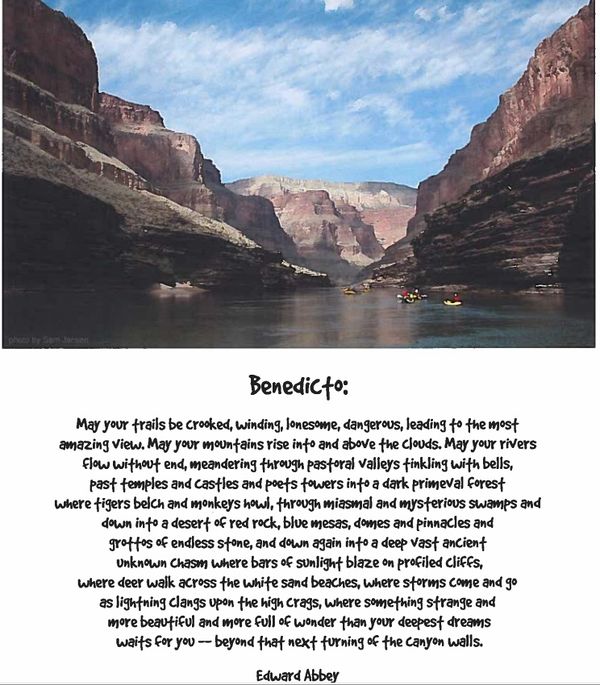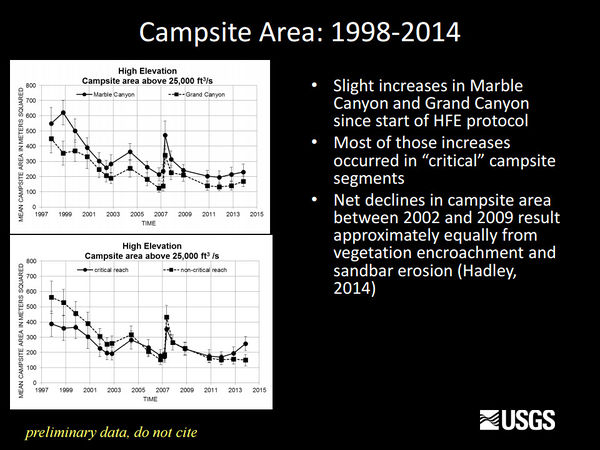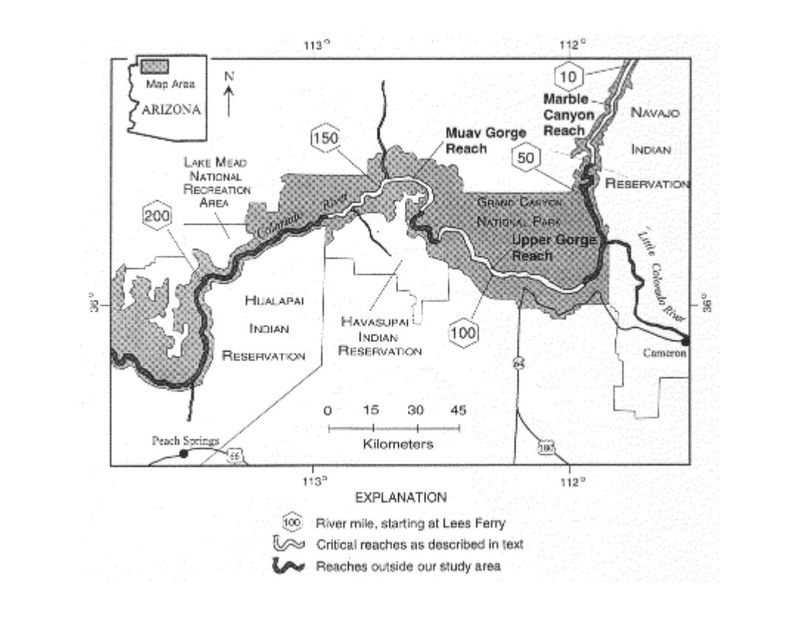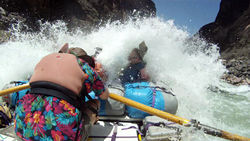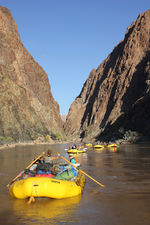Difference between revisions of "RECREATION"
Cellsworth (Talk | contribs) |
Cellsworth (Talk | contribs) |
||
| Line 87: | Line 87: | ||
*Muav Gorge (river miles 131-165) | *Muav Gorge (river miles 131-165) | ||
| − | [[File:CriticalReaches.jpg|center|800px]] | + | [[File:CriticalReaches.jpg|center|800px]] [https://www.gcmrc.gov/library/reports/cultural/Recreation/01WRGR0007/AAB%202000.pdf] |
|} | |} | ||
Revision as of 10:57, 6 June 2017
|
|
Colorado River RecreationSandbars have been used as campsites by river runners and hikers since the first expeditions to the region more than 100 years ago. Because the Colorado River is dominated by bedrock cliffs and steep talus slopes, sandbars provide unique areas along the river that are flat, relatively free of vegetation, easily accessible by river runners, and able to withstand high usage with negligible impact. These campsites continue to be an important part of the recreational experience for the more than 25,000 hikers and river runners that visit the Colorado River corridor each year. [1] LTEMP Resource Goal for Recreational ExperienceMaintain and improve the quality of recreational experiences for the users of the Colorado River Ecosystem. Recreation includes, but is not limited to, flatwater and whitewater boating, river corridor camping, and angling in Glen Canyon. Desired Future Condition for for RecreationRiver Recreation in Grand Canyon National Park The Recreation DFCs are meant to describe goals and objectives for human use of the Colorado River Ecosystem (CRE) through GCNRA and the GCNP. They are intended to include not only traditional recreational activities such as whitewater rafting, camping, and fishing, but also such things as educational activities, spiritual engagement, and other appropriate activities and values. Grand Canyon and Glen Canyon offer many ways for people to experience, appreciate, and learn from them, even to those who never visit in person. |
| --- |
--- |
--- |
|---|
|
|
